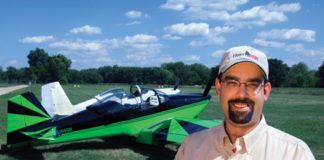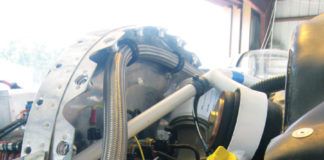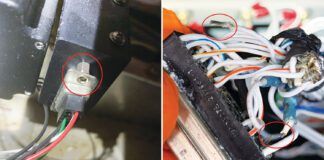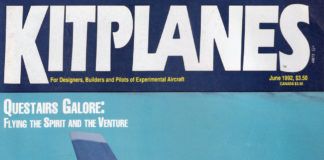Which way is up? Is that the front or the back? Stupid drawings! If you’ve been bewildered by some of the drawings you got with your kit, you’re not alone. Some of the designers appear to have been intimidated by the more esoteric presentations and, for that matter, even made some very basic goofs.
We wont go into a full-blown explanation of the entire subject of drafting standards here-that requires several semesters of college-level courses and it is, even now, undergoing major changes on how dimensioning is done. What we will do, however, is offer a couple of basics that should give you a shot at understanding even those drawings that bear an embarrassing resemblance to the runes carved on a Viking headstone.
Isometric versus orthographic? You’ve heard the terms but probably cant remember which is which. There’s an easy way: “Iso” and “graphic” translate to single view. And that, in turn, can be interpreted to mean one view shows almost everything. Having knocked off that definition, were left with orthographic. That breaks down to “ortho” and “graphic,” which translates to upright view. Simple, no?
Well, no. There are types of each projection within those categories, so thats a gross simplification. But for the moment well leave it at that because these styles of ortho and isographic cover almost everything you’ll see.
The View
The question then arises: If, in an orthographic drawing you can have several views, how do you know what their relationship is to one another? Are you looking at the right or left side of the thing? Cant you just slap them anywhere on the paper? The answer is no.
There are two principal methods for placing the figures, and they result in confusingly similar but different layouts. They’re called first angle projections and third angle projections. The basic idea behind both is to float the object in a six-sided box, project the six faces of the object onto the walls of the box, and then open the box to flatten it.
The difference comes in the projection: First angle projection assumes that the side you see is projected onto the wall behind it. Third angle projection has a light bulb inside the object casting shadows of the object onto the wall nearest that side.
Third angle projection is the standard for North America, so until the recent influx of kits from Europe, where first angle projection is the norm, things were not too confusing. The version used, first or third angle, is denoted by a symbol you’ll sometimes see on the drawing that probably left you wondering, “Huh?” Now before you go completely blurry over this, there’s another, and probably easier way to visualize the North American format, i.e., third angle projection. I call it the bowl method.
The Bowl Method
Put the part in a bowl and look straight down at it. Thats the plan view. Now, keeping the part in contact with the bowl, slide it up the right side. Thats the right side view. Slide left, left view; slide to the upper side, top view. If the bowl were a clear glass sphere, you could keep coming around to the top of the sphere and youd be looking at the bottom of the part. Much easier.
The only wrinkle here is that if you’ve gone all the way over 180, you should place that view on the paper just beyond the view it passed through. So lets try that again. You want to see the bottom? Slide to the right, get a right view and place it to the right of the first view. Now keep sliding in the same direction until its upside down. Thats the bottom view. You’ve been sliding to the right and putting the view to the right, so place this view even further to the right.
What makes this last view a bit tricky is that for a part that is not symmetrical, you’ll get a different view if you go in a different direction. Thats why its important that you put the view in the correct position. Look at the drawing of the bowl and form a picture in your mind of that representation at 12 oclock continuing on around to the top of the bowl; the thin section is in the 6 oclock position.
Now take the view shown at the 3 oclock position and slide it up to the top of the bowl; the thin section now points back at 12 oclock, just the opposite of the first attempt. Go try it to see the effect. Get a salad bowl and a small asymmetric component and slide it up the wall; you’ll see how the views naturally fall into place and how its important to place that top-of-the-bowl view in the correct position.
A simple way of determining if its a third or first angle projection is to again use the bowl; if the bowl doesn’t work, then its probably first angle or mis-drawn.
Mis-drawn. I can only imagine your screams of confusion. But, and this is most likely, especially if the drawing came from Europe, its a first angle projection. How can you tell? Easy.
Lets try the third angle bowl one more time. In a third angle projection the bowl was sitting on the counter in its ordinary open-side-up fashion, and the part was resting nicely down in the bottom of the bowl. Look straight down on it; thats the front view, and we drew it on paper. Then we slid the part up the right side of the bowl and that gave us the right view, which we drew to the right of the front view. Simple.
To get a first angle projection we start by turning the bowl upside down, and the part just fell on the floor. Now place the part on the bowl in the same orientation as before. You look straight down at the part, you get the same picture as before and you draw it on the paper. But now when you slide the part to the right, it goes down the outside of the bowl and shows you a different side of the part.
The same practices apply for placing each of the views on the paper, and you’ll get that same reversal of some elements when tracking the final view from two directions 90 apart.
The Reasoning Behind It
These conventions have been defined for only a century or so. Prior to that it was a free-for-all, or something that required a very good artist to draw accurately. In the past few years, though, engineers have been able to draw the object on a computer and then literally turn the item around as if it were a real object. That led to the possibility of being able to position several of the parts into a realistic-looking assembly. The advantage of this is the ability to check clearances accurately and, consequently, increase the density of the part placement without worrying about needing a fudge factor.
An even more immediate benefit is that libraries of everything from bolts to bearings are available with CAD programs, and the manufacturers are supplying CAD drawings of their products in an effort to get them easily specified into the next assembly. This means the designer can insert one -20 bolt or a commercially available hinge, and then use it throughout the drawing with the assurance that there is room for a wrench and the hinge really works. Because the parts can be moved, rather than just popped into position, the bolt can be extracted to check for clearance. You might remember pre-CAD automobiles that required the removal of a fender to get one of the spark plugs out. While there is no guarantee of that not happening now, the potential is enormously reduced.
One of the most useful features is the ability to slice open the assembly and see how several parts interface. Back in the bad old days of 2H pencils and vellum this used to be an expensive and time-consuming procedure of hand drawing. With CAD its a matter of pushing a few buttons and a couple of mouse clicks. By the way, CAD is an acronym for computer-assisted drafting; ACAD and AutoCAD are CAD products made by one of the industry leaders.
Now that the iso/ortho drawings have given us the big picture, well use another type of drawing to get some details. Its the sectional view, and its a favorite of designers. It has two uses: You can, in essence, get around the parts that are blocking your view, or you can slice right through a component to see a cross section.
Drawing the Line
Finally, lets look at the issue of line styles. If every line were the same wed have a very confusing situation, so there’s a universal consensus on at least a few of the basic ones. They are:
Solid lines indicate a visible feature.
Dashed lines indicate a hidden feature.
Dash-dot is used for the centerlines of holes or other features.
After that it goes into line weight, meaning line width, and a plethora of cross-hatchings to indicate everything from aluminum to zinc. Fortunately, that esoterica is not prevalent outside the confines of mega-tech companies like Boeing or Bell Helicopter.
As was noted at the outset, mastery of this is not intuitive. It is a specialty so much so that when I was a design engineer, we would whip out a component and then send it to a group of specialists to clean up our digital gibberish and make it conform to the company standards.
But the one rule upon which Ive always relied is that clarity is more important than any rule. If showing it in a non-standard way is the only way to get the idea across, do it. Just be sure you’ve exhausted the standard ways first.
Editors note: If you have specific questions for author Bob Fritz, or if you have certain projects youd like us to cover, email us at [email protected] with “Home Machinist” in the subject line.





I hope the print article has some illustrations. I’m an ex-AAE and got graphics back in the drafting table days. My eyes glazed over trying to visualize the explanation I’ll read it again when the magazine comes out.
Greg, this is an old article – the print magazine is here:
https://www.kitplanes.com/january-2008/